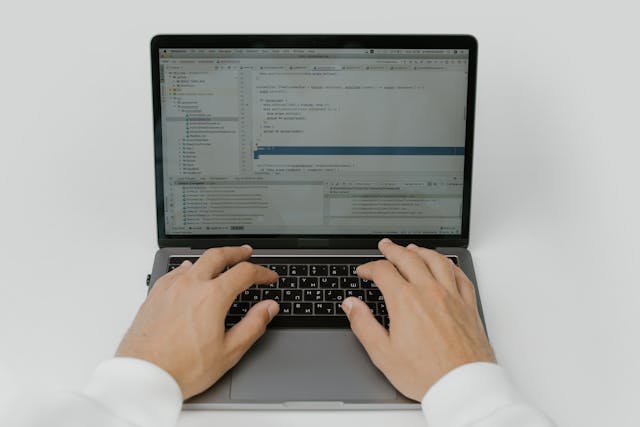Introduction to patient portal and its uses in the healthcare sector
Patient portals are one of the best features you should consider implementing into your healthcare practice, as their versatile design allows you to increase engagement and workflow. They grant clients access to booking and scheduling appointments themselves, as well as to review payment and history information, in addition to medical records. Patient portals also allow clients to communicate with healthcare professionals at any time, with video conferencing and messaging features available.
However, patient portal security must be of the utmost importance, as many healthcare practices deal with sensitive patient information. Patients need to be assured that their data is kept confidential and is at minimal risk of being jeopardized in any way. Many companies, such as Carepatron, offer patient portal software that incorporate HIPAA compliant security measures to ensure that information is encrypted and private. Because security breaches can occur in healthcare 20% of the time, choosing a provider that prioritizes patient portal security is best.
Security and privacy risks with patient portal accounts in the US
When using patient portal software dealing with sensitive information, sometimes the data can be undesirably shared. This isn’t uncommon, and so while there is an inherent risk with portals, the proper protocol and standards in place can help overcome this so everyone can access patient portal features safely.
In the US, 45% of hospital staff breached terms of service by failing to comply in a research experiment. When encountering a situation that presented the opportunity for confidential password sharing, a fair number of hospital staff promoted such behavior when they should’ve stopped it from happening. Password sharing is a prime example of an easy way to increase vulnerability to privacy issues and violate the American Health Insurance Portability and Accountability Act (HIPAA). The patient may not want the caregiver to know all the information recorded within the portal, and knowing the password may also mean the caregiver has access to banking details.
Proxy accounts are a considered solution, where caregivers have their login credentials. However, this isn’t always user-friendly. With an easy setup with limited access to only necessary medical records, proxy accounts could be a solid solution to the risks posed by sharing information.

Security & compliance features that patient portals need to have to overcome significant security & privacy risks
To have a secure patient portal that allows for information to be kept confidential, there are various features you need to incorporate for medical compliance and security. For an efficient patient gateway to improved health and treatments, you should be considering the following:
- Encryption - Having encrypted data means your information is only readable by authorized personnel, and there is an excellent minimized risk of information being jeopardized. Encrypted data is one of the highest forms of securely transmitted and stored information and is standard for healthcare information.
- Have Role-Based Access Control (RBAC) - Everyone in your organization has different roles. So, it seems logical to conclude that not everyone needs access to the same types of information. Granting access to specific users based on their part is essential, so only authorized individuals have access to what is needed. For example, administrative staff does not need to view the same data as doctors do, as the administrative staff does not diagnose patients.
- Password and authentication processes - You should have password walls in place, so the account is locked if inactivity or the password has been entered incorrectly multiple times. Two-factor authentication, which requires confirmation from SMS services, can also further secure patient portals as an additional security step.
- Auditing - To elevate patient portal security, all activities should be automatically recorded, quickly assessed, and reviewed by staff.
- Consent - Your patient portal needs to have some sense of accountability with patients acknowledging risks across all healthcare processes, including using the portal itself. This can clear any potential legal issues, as well as mean you can be HIPAA compliant.
- Consider local and international laws - You must be meeting regulations, standards, policies, and rules set by organizations and authorities. Failure to do so could result in severe consequences for your healthcare practice.
- Custom conditions - Having custom privacy policies and terms and conditions means you can have some administrative control over how you choose to handle private information. It should be transparent, and again, clearly complies with laws.
- PCI compliance - Patient credit cards cannot be stored within your clinic unless you are compliant with PCI standards to keep payment information secure.
Best practices of cyber security inpatient portals
For a secure health portal, there are multiple practices you could implement to ensure privacy and confidentiality for you and your patients.
- Automated sign-up - By having an automatic sign-up process, there is a minimized risk of false enrolments. The patient only needs to provide a select amount of information, with the portal software confirming their identity in the backend.
- Using updated anti-virus and malware software - Ransomware and malware attacks are very common, especially in healthcare practices. The best way to combat this in your clinic is to use the best-updated anti-virus and malware software. This makes it far more difficult for hackers to access the information, with more obstacles to jump through and means patient information can be kept safe.
- Using multifactor verification - Two-factor authentication, such as having a password or PIN in addition to cell phone numbers, fingerprints, or other biometric information. If the information is compromised, multiple logins mean it is more difficult for valuable information to be extracted, making it a perfect feature for patient portals.
- Identity solutions - Device intelligence can notify you who is accessing what and where patients are logging in. Security questions can also be prompted to confirm patient identities and use biometrics to supplement security. Alongside facial recognition and fingerprint scanning, there are various ways to verify a patient’s identity. To strengthen your relationship with patients, you should also be transparent about where patient data concerning their identity is used.
- Increase interoperability - Because multiple people are using patient portals, including patients themselves, physicians, practitioners, and other specialists, the systems in place must be compatible to be used across services. This means that the correct medical data and information are accessed quickly by those who need it, and it is up to date.
Final thoughts
Patient portal security is of utmost importance for successfully managing and implementing portal services for you and your patients. As outlined, a lot goes into providing secure portals that are HIPAA compliant, encrypted, and interoperable.
But not to fear! Many healthcare businesses, such as Carepatron, provide patient portals for healthcare, designed with you and your clients’ needs in mind. Carepatron is a HIPAA compliant service that offers patient portals with access to appointment booking and scheduling, video conferencing and messaging, and clinical documenting features. This is in addition to payment information and medical billing and coding resources. If patient portal security is something you’re interested in but seems a bit scary - consider a healthcare software platform to ensure you’re meeting all your healthcare needs.

Further reading:




.jpg)

.jpg)
.jpg)

.jpg)




.jpg)

.jpg)

.jpg)



.jpg)
.jpg)
.jpg)


